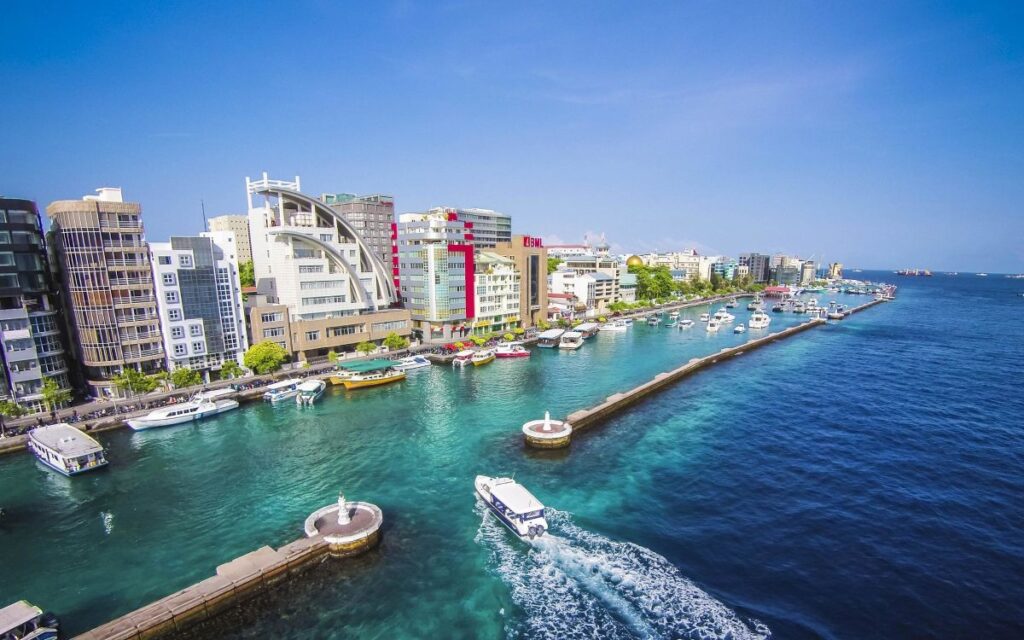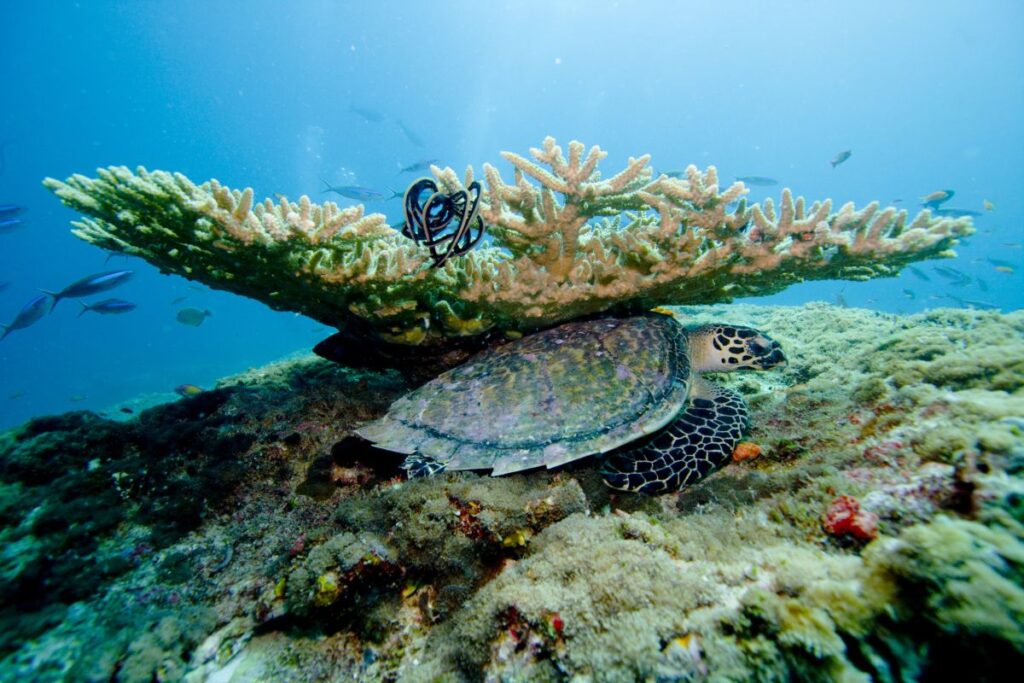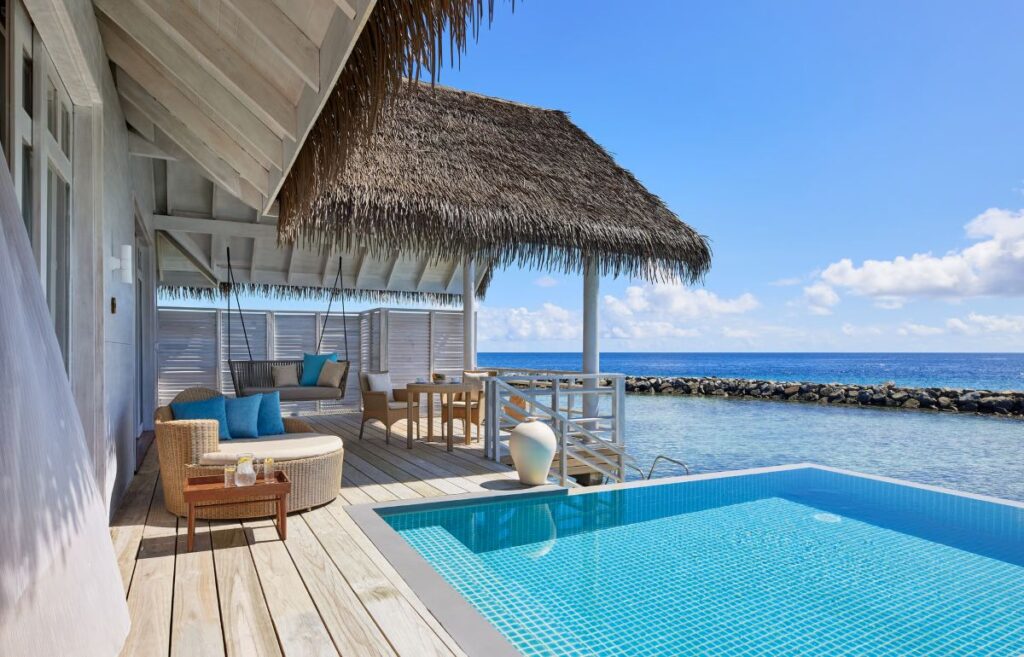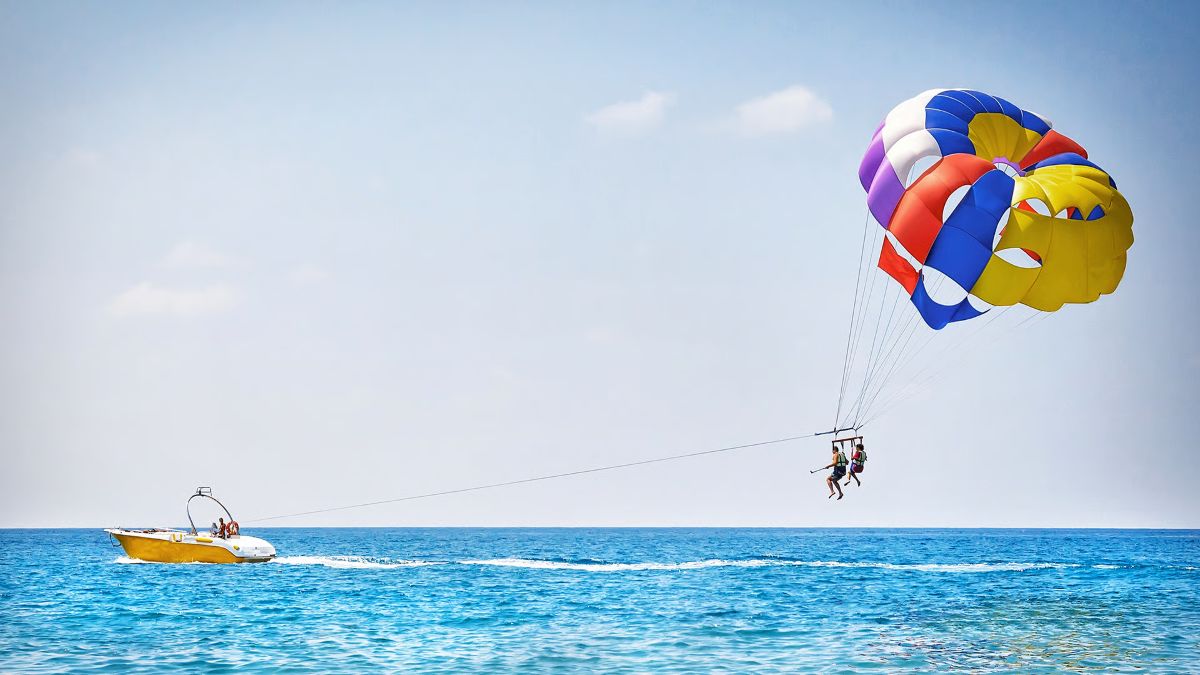Discover the stunning Republic of Maldives, a tropical paradise of turquoise waters and white sandbanks. This comprehensive guide reveals both iconic attractions like Malé and luxury resorts, as well as rare local gems such as Dhiffushi and the enchanting i banchi delle Maldive. Whether you seek adventure, cultural immersion, or budget-friendly travel, find insider tips, sustainable practices, and a downloadable itinerary planner to craft your perfect Maldives getaway.

Welcome to the Maldives—A Paradise of Turquoise Waters and White Sandbanks
Imagine stepping onto a tiny, pristine sandbank surrounded by the endless blue of the Indian Ocean. The powdery white sands squeak softly beneath your feet, and the crystal-clear turquoise waters shimmer under the golden sun, reflecting a sky as blue as sapphires. This is the enchanting reality of the Maldives, a destination where nature’s artistry creates surreal landscapes dotted with secluded sandbanks, vibrant coral reefs, and breathtaking ocean vistas.
Known as the republic of Maldives, this island paradise is renowned worldwide for its picture-perfect scenery, luxurious resorts, and vibrant marine life. But beyond the well-trodden paths of overwater villas and popular beaches, lie hidden treasures—tiny, almost otherworldly islands and secret sandbanks like i banchi delle Maldive—each offering a slice of untouched serenity and natural beauty.
Whether you seek a romantic escape, an adventure binge, or a tranquil retreat away from crowds, the Maldives promises an unforgettable experience. From exploring the lively streets of Malé, the capital of the Maldives, to discovering rare islands like Dhiffushi—a haven of authentic local culture—this tropical haven beckons with both its iconic sights and its secretive, lesser-known wonders.
Get ready to set sail on a journey through a land where nature’s purest creations—white sands, turquoise waters, and incredible marine biodiversity—reign supreme. This is Maldives — not just a destination, but a poetic masterpiece crafted by the ocean itself.
Understanding the Republic of Maldives
The Maldives is a mesmerizing archipelago comprising 26 atolls and over 1,200 coral islands, stretching across the Indian Ocean. These islands are arranged in a double chain that extends approximately 871 kilometers (541 miles) north to south and about 130 kilometers (81 miles) east to west, covering an area of roughly 90,000 square kilometers. However, only around 298 km² (115 sq miles) of that is dry land, making the Maldives one of the most dispersed countries in the world.
Geographic Overview
The islands have a unique coral origin, formed from the crowns of a submerged ancient volcanic mountain range. The atolls consist of lively coral reefs, sandbars, and patches, often ring-shaped (called faros), that emerge during low tide, creating natural lagoons teeming with marine life. Not all islands are inhabited—the Maldives has about 198 inhabited islands, with the remaining being uninhabited or designated for conservation and tourism.
Malé: The Capital of the Maldives
At the heart of the nation lies Malé, frequently referred to as “Maldive ki Rajdhani” (Maldives’ capital). It serves as the political, economic, and cultural hub, hosting government offices, markets, and historical sites. Malé is also a crucial gateway for tourists arriving by sea or air, offering a glimpse into Maldivian local life through its bustling markets, mosques like Hukuru Miskiy, and vibrant street life.

Ecological Significance
The Maldives has a tropical monsoon climate, characterized by distinct dry and rainy seasons, with the highest rainfall from June to November. The nation’s low elevation—averaging only about 1.5 meters above sea level—makes it highly vulnerable to rising sea levels. The country is actively pursuing eco-sustainability and conservation efforts to protect its delicate coral reefs and marine biodiversity, which are vital to both the environment and economy.
Summary
Understanding the geography of the Maldives reveals why it is one of the world’s most unique and fragile ecosystems. Its sprawling atolls and coral islands, centered around Malé—the capital—set the stage for unforgettable experiences shaped by nature and ongoing conservation efforts.
Perfect Timing: When to Visit Maldives (“Maldive quand partir”)
Maldives’ Climate and Seasons
The Maldives enjoys a warm tropical climate year-round, but the islands experience two distinct seasons shaped by monsoon winds. The dry season typically runs from November to April, characterized by sunny skies, low humidity, and calm seas. This period is widely regarded as the best time to visit Maldives, offering perfect conditions for beach relaxation, snorkeling, diving, and other water activities.
Conversely, the wet season spans from May to October, bringing intermittent heavy rains and stronger winds. Despite the occasional showers, the weather remains warm and the rains tend to be short-lived, making travel during this period feasible for budget-conscious tourists willing to embrace occasional rain showers.
Best Months for Activities and Wildlife Spotting
For sunseekers and beach lovers, the peak dry months of January to April offer the most reliable sunshine and clear waters, ideal for picturesque beach days and exceptional underwater visibility. This is also the prime time for spotting vibrant marine life while diving or snorkeling.

The shoulder months of October and November strike a balance, with fewer crowds and lower prices. These months are also notable for whale shark and manta ray sightings, particularly in the northern atolls like Baa Atoll, where plankton-rich waters attract these gentle giants.
Insider Tips to Avoid Crowds and Score Deals
- Book early if traveling during dry season (Nov-Apr) to secure accommodations and flights at reasonable rates, as this is the busiest tourist period.
- Choose the shoulder seasons (March-April and October-November) for better deals and quieter resorts without sacrificing too much on weather quality.
- Consider visiting lesser-known local islands outside of Malé to avoid tourist congestion while enjoying authentic Maldivian culture.
- Stay flexible with travel dates to take advantage of last-minute discounts and package promotions, especially in April and November.
Summary
When planning your Maldives vacation, aim for the dry season between November and April for the ultimate tropical experience marked by sunshine, calm seas, and spectacular marine visibility. For more adventurous travelers or budget seekers, the shoulder and wet seasons offer unique wildlife viewing and value without completely compromising on enjoyment. Knowing “Maldive quand partir” empowers you to tailor a trip that fits your preferences perfectly.
Iconic Attractions and Experiences in the Maldives
Must-See Sites in Malé: The Heart of the Maldives
Malé, the capital of the Maldives and the bustling core of the republic of Maldives, is a compact city rich in history and culture. Despite its small size, Malé offers exciting landmarks that every traveler should explore.
Start your visit at the iconic Hukuru Miskiy (Old Friday Mosque), a magnificent 17th-century coral stone mosque showcasing intricate carvings and Islamic architecture. Nearby, explore the Maldives National Museum, which houses royal artifacts, traditional weaponry, and ancient treasures telling the story of the nation’s rich past. Take in the vibrant atmosphere of the Malé Fish Market, where fresh catches are sold alongside local produce, giving you a glimpse of daily Maldivian life.
Other notable spots include Sultan Park, a serene green oasis perfect for relaxation, the Presidential Palace (Mulee Aage), and the impressive Islamic Centre with its striking golden dome, home to the largest mosque in the Maldives. For a local flavor, stroll through the narrow streets lined with colorful shops and cafes.
Experience Luxury Resorts and Overwater Villas
No visit to the Maldives is complete without indulging in world-famous luxury resorts. These exclusive retreats offer overwater villas with private pools, direct access to turquoise lagoons, and some of the best spa experiences on the planet. Resorts like Soneva Jani, Gili Lankanfushi, and Le Méridien Maldives blend eco-consciousness with opulence, often set amid pristine coral reefs teeming with marine life.
Whether you desire a romantic getaway or a family vacation, the Maldives’ luxury resorts provide high-end dining, wellness retreats, and thrilling activities ensuring comfort and adventure in equal measure.

Popular Water Activities: Snorkeling, Diving, and Sunset Cruises
The Maldives is a dream destination for water lovers. The vibrant coral reefs and clear waters make it one of the world’s best spots for snorkeling and diving. Explore colorful marine life—from tropical fish to graceful manta rays and turtles—at famous sites like Banana Reef, HP Reef, and Manta Point.
For a more relaxed experience, embark on a sunset cruise aboard a traditional Maldivian dhoni boat. Watch the sky burst into hues of orange and pink while sailing across peaceful lagoons, perhaps spotting dolphins playing in the waves.
Rare and Local Island Gems of the Maldives
Discover Dhiffushi: Authentic Island Life and Local Vibes
Dhiffushi is a tranquil, local island located about 36 kilometers northeast of Malé, offering a genuine peek into Maldivian culture far from the luxury resort crowd. Known for its warm hospitality, Dhiffushi is dotted with affordable guesthouses and boutique stays that bring travelers close to daily island life. Visitors can enjoy fresh seafood, traditional Maldivian dishes like mas huni and grilled reef fish, and engage in local festivities and customs. Activities here include snorkeling, kayaking, island explorations, and unforgettable sandbank trips that showcase the stunning natural beauty surrounding the island.
Baa Atoll Highlights: Kendhoo and Hanifaru Bay
Baa Atoll, a UNESCO Biosphere Reserve, is a sanctuary of biodiversity and a dream for ecotourists. Kendhoo Island is celebrated for its coral stone mosques, traditional music, and vibrant community life. It’s a pristine, rarely crowded destination where you can witness authentic Maldivian heritage intertwined with unspoiled nature.
Just a short boat ride away is Hanifaru Bay, renowned globally as one of the best places to see manta rays and whale sharks in their natural habitat. This protected bay provides a mesmerizing underwater spectacle during the season from May to November when the plankton-rich waters attract these gentle giants. The area is strictly regulated to maintain ecological balance, offering visitors a responsible wildlife experience.
Exploring “I banchi delle Maldive”: Magical Sandbanks
The phrase “i banchi delle Maldive” refers to the enchanting sandbanks that appear and disappear with the tides, scattered across the archipelago. These secluded stretches of white sand amidst crystal-clear lagoons are perfect for picnics, photography, or simply basking in serene beauty. Sandbank excursions around islands like Rasdhoo and Gaafaru are prized for their peaceful surroundings and stunning turquoise waters, offering visitors a surreal private island experience that’s a true hidden gem.
Tips for Responsible Tourism on Local Islands
When visiting local islands like Dhiffushi and Kendhoo, it’s essential to respect the local culture and environment. Dress modestly, seek permission before photographing people, and support community-run guesthouses and local businesses. Avoid littering, follow guidelines during wildlife tours, and choose sustainable activities to help preserve the Maldives’ fragile ecosystems for future travelers.
Immersive Cultural Experiences in the Maldives
Traditional Maldivian Cuisine: A Feast for the Senses
No exploration of Maldivian culture is complete without tasting its vibrant cuisine. Staple dishes like Mas Huni, a delightful mix of shredded smoked tuna, coconut, onions, and chili served with flatbread called roshi, offer an authentic breakfast experience. Another local favorite is Garudhiya, a fragrant fish broth served with rice, lime, chili, and onions. Fresh seafood—grilled fish, lobster, and calamari—dominates the menus in local eateries, bringing the flavors of the sea straight to your plate.
Participating in Local Festivals and Craft-Making Traditions
The Maldives’ cultural calendar is richly woven with religious and national celebrations that provide travelers unique glimpses into community life. Major Islamic festivals like Eid al-Fitr (Kuda Eid) and Eid al-Adha (Bodu Eid) are celebrated with fervor, involving communal prayers, feasting, and vibrant street events particularly in Malé, the capital of the Maldives. National holidays such as Independence Day (July 26th) feature parades, cultural performances, and patriotic displays.
Aside from festivals, engaging with local craftsmen in islands like Dhiffushi reveals traditional arts such as lacquer work, mat weaving, and coir rope making—skills passed through generations that sustain community identity and heritage.
Embracing Sustainable Travel for a Better Maldives
Mindful tourism is crucial for preserving the Maldives’ fragile marine and island ecosystems. Visitors can participate in coral reef conservation initiatives, including coral planting and beach clean-ups, often organized by resorts and local NGOs. Community-based tourism is also gaining traction, encouraging travelers to support local businesses, homestays, and eco-friendly tours that benefit island communities directly.
By choosing sustainable activities and respecting local customs, visitors contribute to safeguarding the Maldives for future generations while enjoying deeply enriching cultural encounters.
Practical Travel Tips for Enthusiasts
Planning Your Ideal Maldives Itinerary: Luxury Meets Local Life
Crafting the perfect Maldives itinerary is about balance—combining stays at luxury resorts with visits to local islands like Dhiffushi or Kendhoo for authentic cultural experiences. Allocate some days for indulgent relaxation in overwater villas and spa retreats and mix in adventurous island hopping. Try to cluster your destinations by atoll to minimize transit time and maximize enjoyment.
Transportation Advice: Seaplanes, Speedboats, and Ferries
Transportation in the Maldives is uniquely scenic yet requires planning. For resorts farther from Malé, seaplane transfers offer swift and breathtaking rides over turquoise lagoons, usually taking between 15 to 70 minutes, but expect higher costs ($350–$1,500 per trip). For islands closer to the capital, speedboats provide efficient, affordable transfers (20-50 USD) in 30 to 90 minutes.
Budget-conscious travelers can use the public ferry system, the cheapest option ($2–$30), though ferries have limited daily schedules, low speeds, and don’t serve resorts directly. Domestic flights connect distant atolls but require additional boat rides to final destinations.
Packing Essentials: What to Bring
To make the most of your Maldives trip, pack reef-safe sunscreen to protect the fragile marine ecosystem, along with snorkeling gear if you prefer your own over resort rentals. Lightweight, breathable clothing, swimwear, sun hats, and water shoes will keep you comfortable. Don’t forget insect repellent for evenings and a waterproof bag for your electronics.
Budget Travel Tips: Experience Without Overspending
Explore local guesthouses on inhabited islands to enjoy Maldives on a budget without missing authentic encounters. Use public ferries and scheduled speedboats instead of costly private transfers or seaplanes. Eat at local cafes for fresh seafood at lower prices than resort fare. Combine several days on local islands with a short luxury stint to savor both worlds affordably.
Plan Your Perfect Maldives Trip with Our Free Itinerary Planner!
To help you organize your journey—whether you’re seeking luxury, adventure, culture, or budget travel—download our comprehensive Maldives itinerary planner. It includes day-by-day breakdowns, transport tips, packing checklists, and suggested activities tailored to your travel style.
[Download Your Maldives Itinerary Planner Here]
Inspiring Departure: Start Your Maldives Adventure
The Maldives is more than a postcard-perfect destination—it is a mosaic of vibrant local cultures, hidden gems, and breathtaking natural beauty waiting to be discovered beyond the typical tourist spots. As you plan your journey, remember that each island, from the bustling streets of Malé to the serene sandbanks of i banchi delle Maldive, offers unique stories and experiences that can transform your trip into a deeply personal adventure.
Venture beyond the familiar luxury resorts and iconic beaches to explore local islands like Dhiffushi or the biodiversity-rich Baa Atoll, where authentic culture meets pristine nature. Let your curiosity guide you to off-the-beaten-path locations, where tranquility reigns, and moments of awe become commonplace.
This is your invitation to immerse yourself fully—whether snorkeling amid vibrant reefs, indulging in traditional Maldivian cuisine, or simply savoring a sunset from a peaceful sandbank. The Maldives promises unforgettable memories for those who seek to experience all its facets.
Ready to embark? Share your travel plans or stories with fellow enthusiasts to inspire and enrich the community of Maldives explorers. For easy trip planning, explore reliable booking platforms, local guides, and sustainable tour operators dedicated to preserving this fragile paradise for generations to come. The Maldives awaits—where every wave tells a story and every island is an invitation to discovery.
If you’re looking for more travel inspiration beyond the Maldives, be sure to check out our Top 5 Summer Holiday Destinations to Explore in 2025 for exciting getaway ideas. For a tropical adventure in another iconic paradise, dive into our detailed Bali Travel Guide: Your Ultimate Guide to Explore Indonesia, perfect for planning your next unforgettable trip.


Leave a Reply